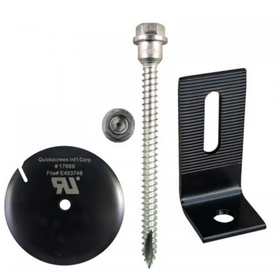
A Tour of California's Caterpillar House
Last Updated: Feb 8, 2025The first LEED Platinum custom home on California’s Central Coast defines the essence of sustainability. Combining an aesthetic, modern design, connection to the local landscape, and several essential elements of sustainable construction, the Caterpillar House can act as a prototype for homes seeking maximum sustainability, livability, and aesthetics.
Table of Contents
- What Makes the Caterpillar House so Special?
- The Underlying Values that Helped to Shape the Caterpillar Home
- Bottom Line

Rise recently sat down to talk with Feldman Architecture, the San Francisco-based architectural firm that designed the Caterpillar home located in the rolling hills of the Santa Lucia Preserve, about two hours south of the San Francisco Bay area. The modern-ranch home contains a strong connection between indoor and outdoor spaces, tied to the local landscape in a very tangible sense.

What Makes the Caterpillar House so Special?
Thermal Performance
The majority of the walls of the Caterpillar House are made from rammed earth, which was sourced from the soil excavated at the building site. According to the experts at Feldman Architecture: “At Caterpillar House, we chose rammed earth walls to act as these thermal masses. The walls themselves at 16” thick and are strategically located to capture heat around the building throughout the day. Obviously, they also provide a strong aesthetic that was used to define the material pallet of the home. For this particular project, the entire team was drawn to the warm, natural color tones the walls provide.”

The home was designed for maximum solar heating and cooling through elongated East-West orientation that maximizes the efficiency of passive heating. The exposed concrete floors and rammed earth walls absorb heat from the daytime sun and release it slowly during the cool nights to naturally moderate the interior temperature of the building. In terms of energy-efficient windows, the South facing glazing has a U-factor of 0.25 and a Solar Heat Gain Coefficient (SHGC) of 0.4 to optimize passive solar gain.

Cross ventilation and ceiling fans throughout cool the entire home. Shading trellises and long overhangs on the south and west walls also reduce the need for a cooling system. Deciduous trees and retractable awnings provide summer shading on the south-facing glazing while allowing the sun’s heat to penetrate during cooler winter months. Air leakage is minimized with blown-in, bio-based insulation. The house also features an insulated, recirculating hot water system.

While the thermal performance of the Caterpillar House is certainly noteworthy, it also contains other sustainability features.
Healthy Home
- Low formaldehyde and low VOC materials used throughout the home to reduce exposure to harmful toxins in the air.
- Exhaust fans in bathrooms and kitchen ensure healthier indoor air quality.

Energy Use Reduction
- A zoned radiant floor heating system is designed to reduce distribution loss and provides maximum comfort where it is needed most.
- Energy-efficient appliances and lighting reduce electricity consumption.
- An integrated photovoltaic panel system produces 115% of annual energy requirements (making it an energy positive home).

Water Use Reduction
- Due to the relatively arid climate of the region, rainwater is collected both through a site catchment system and also from the roof of the home. This water is then stored in fairly large storage tanks adjacent to the home. Instead of having huge cisterns interrupt the way in which the home blends into the surrounding landscape, the architect explains that “we integrated the tanks into the architecture of the home, allowing them to become defining elements of the façade.”
- Native, drought-tolerant landscaping reduces the need for irrigation.
- Low flow bathroom fixtures reduce potable water usage.

The Underlying Values that Helped to Shape the Caterpillar Home
Designing a sustainable home like the Caterpillar Home is a collaborative process that includes the homeowner, the architectural team and the builder. The designers at Feldman Architecture believe that “despite the common myth of the individual creative genius, we find architecture to be a fundamentally collaborative process. As architects, we trust that good projects come from forward-thinking clients who trust their design team and empower them to push for uncharted territory. We approach design as a dialogue between client, design team, and site, and view each project as an opportunity to create an innovative solution tailored both to the project environs and the client’s needs. We listen without preconception, share visions and values, and collectively generate solutions that are responsive to program and context, sustainable and elegant. At the core of each design team, our diverse set of designers brings both a wealth of international and local experience and a fresh perspective to the project at hand.”
Throughout the design and construction process, a constant question was: “How can we mitigate the impact of this project on the site, and what opportunities are there for us to restore or enhance the landscape?”
Tobias Roberts
Tobias runs an agroecology farm and a natural building collective in the mountains of El Salvador. He specializes in earthen construction methods and uses permaculture design methods to integrate structures into the sustainability of the landscape.













